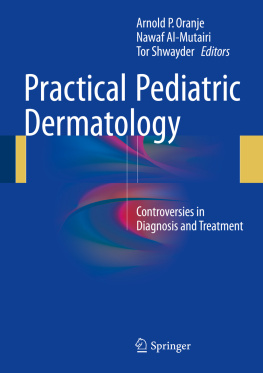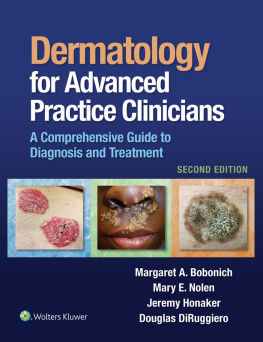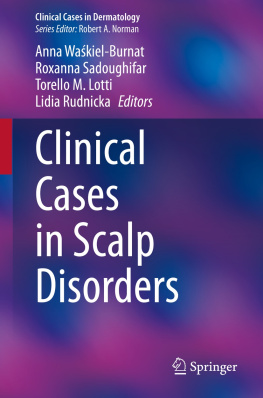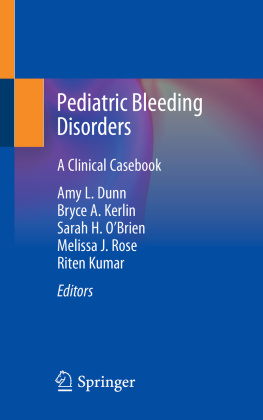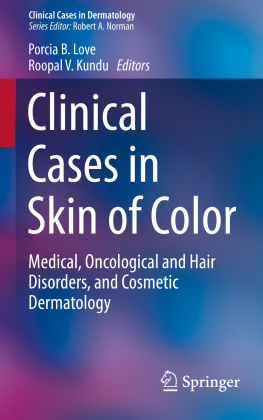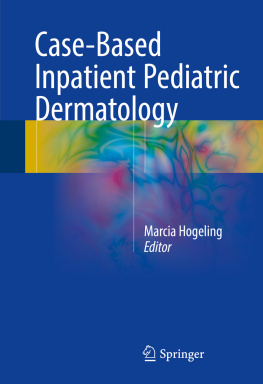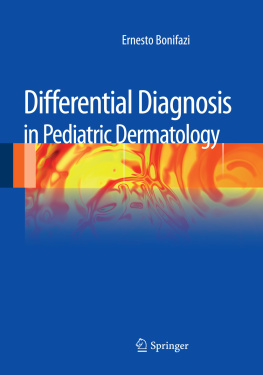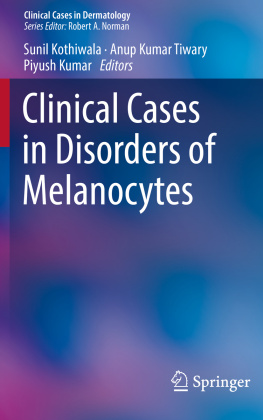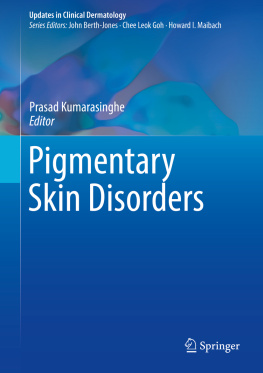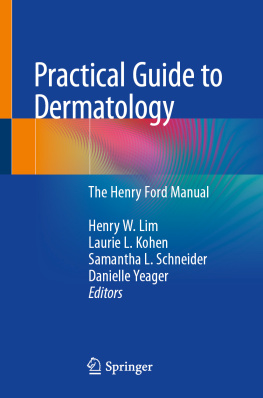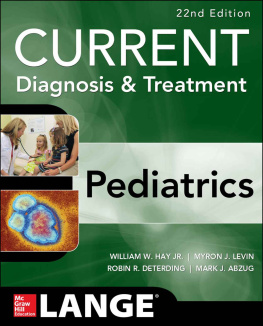Part I
Introduction
Springer International Publishing Switzerland 2016
Arnold P. Oranje , Nawaf Al-Mutairi and Tor Shwayder (eds.) Practical Pediatric Dermatology 10.1007/978-3-319-32159-2_1
1. Pediatrics, Dermatopediatrics, and Pediatric Dermatology
Arnold P. Oranje 1
(1)
Department of Dermatology, Dermicis Skin Hospital Alkmaar, Kinderhuid.nl Rotterdam, Rotterdam, The Netherlands
(2)
Department of Dermatology, Franciscus Gasthuis and Vlietland, Rotterdam / Schiedam, The Netherlands
Arnold P. Oranje (Corresponding author)
Email:
Flora B. de Waard-van der Spek
Email:
Abstract
Pediatric dermatology is a specialty that is dealt with by pediatricians and dermatologists. Knowledge of dermatology as well as a solid basic knowledge of pediatrics is necessary. In the USA, pediatric dermatology is a recognized term and an official specialty with its own board exam. But there are also physicians who call themselves pediatric dermatologists though they are not board certified in pediatric dermatology. However, in the rest of the world, much more physicians call themselves pediatric dermatologists while they are not all experienced and educated in diagnosing and treating children with skin diseases.
Keywords
Pediatric dermatology Dermatopediatrics Pediatrics Training in pediatric dermatology Status of pediatric dermatology
Pediatric dermatology is a specialty that is dealt with by pediatricians and dermatologists. Knowledge of dermatology as well as a solid basic knowledge of pediatrics is necessary. About 1030% of the pediatric primary care visits in the USA include skin-related problems (Prindaville et al. ).
Pediatric dermatology is different from dermatology of the child (see in particular the report in the White Book Dermatology , 2005) (Oranje et al. ). There is a great need for certification of pediatric dermatology and for specialized training both for dermatologists and pediatricians. In the USA, initial informal training in pediatric dermatology evolved into formal 12-year programs sponsored by the American Board of Dermatology (ABD). Certification should be instituted by the European Society for Pediatric Dermatology (ESPD) and become valid for 5 years, commencing with the first certifying evaluation offered by the Certification Board of the ESPD.
Role of the Training and Certification Committee in Pediatric Dermatology
There is an urgent demand for training and certification programs in pediatric dermatology in Europe and all other countries in which there is no protected status of pediatric dermatology. A certification committee needs to (1) ensure that all trainees entering the pediatric dermatology program have access to European and national-based programs, (2) specify the training program in pediatric dermatology, (3) supervise and monitor training and certification standards in the EU in pediatric dermatology in conjunction with the European Board of Pediatrics and the European Academy of Dermatology and Venereology (EADV), and (4) liase with the European Board of Pediatrics and EADV and the national bodies so that training programs and assessments meet the agreed standards and provide for the national bodies as an independent reference for internal disagreements over training and training center accreditation. Till now, conservatism restricted the evolvement of a subspecialty in pediatric dermatology, as well as that pediatric dermatology is not a money-making activity.
Tertiary Pediatric Dermatology and Requirements
European Society for Pediatric Endocrinology
This chapter summarizes the minimum requirements for training in tertiary care pediatric dermatology center. Tertiary care pediatric dermatology is not yet recognized as such by the Confederation of European Specialists in Paediatrics (CESP). The situation with respect to national bodies varies within the European Union (EU) as follows.
In many countries, there are different categories:
General dermatologists and pediatricians with a special interest.
Pediatric dermatologist as a subspecialist.
A pediatric dermatologist could be originally a dermatologist or pediatrician.
Some societies in pediatric dermatology are led by non-pediatric dermatologists perhaps because of these physicians eagerness to lead any society. It is known to the authors some of these physicians do not even practice pediatric dermatology.
A tertiary specialist in pediatric dermatology must have a good knowledge in dermatology, as defined in this document. He or she must be able to read the skin (statement of Ruggero Caputo, MD, personal communication).
The training program should:
Harmonize training programs in pediatric dermatology between different European countries and other countries.
Establish clearly defined standards of knowledge and skill required to practice pediatric dermatology at the secondary and tertiary care level.
Foster the development of a European network of competent tertiary care centers for pediatric dermatology.
Improve the level of care for children with complicated or chronic dermatological disorders.
Pediatric Dermatology Training
The CESP is the specialist section of pediatrics of the European Union of Medical Specialists (UEMS). Represented are the member countries of the European Union and the European Free Trade Association. In addition, CESP has admitted subspecialties to their meetings. The European Society for Pediatric Dermatology also has the intention to become a member of the CESP. For pediatric dermatology, there exists no certification (official and nonofficial) and no specialization in any country except in the USA. Anybody may call himself/herself a pediatric dermatologist and that is what is actually happening at present.
Requirements for Training Institutions
Training centers in pediatric dermatology should cover the whole field of pediatric dermatology in an excellent way and medical research. In these institutes, pediatric dermatology is a major field of interest. Postgraduate courses on a national or international level should be organized periodically. The mission is to lead a national and international effort on the European level to improve the knowledge in the field of pediatric dermatology through clinical research and training programs to understand the causes of childhood skin disease; prevent, detect, diagnose, treat, and control skin disease in early stages; and disseminate information to the practitioner, patient, and public. Such training centers should be located in a high-standard pediatric hospital setting. Language should be limited to English, Spanish, and French. The language will be chosen based on the national origin of the candidates for training.
The following are fields closely integrated into pediatric dermatology:
Neonatal diseases
Genetic diseases. The Human Genome Project, a worldwide research effort designed to analyze the structure of human DNA, must be supported.
Ophthalmology
Autoimmune diseases
Allergology
There will be a structured quality review of the recognized centers every 5 years based on UEMS guidelines.
A training center can be a single institution or a group of related establishments.

